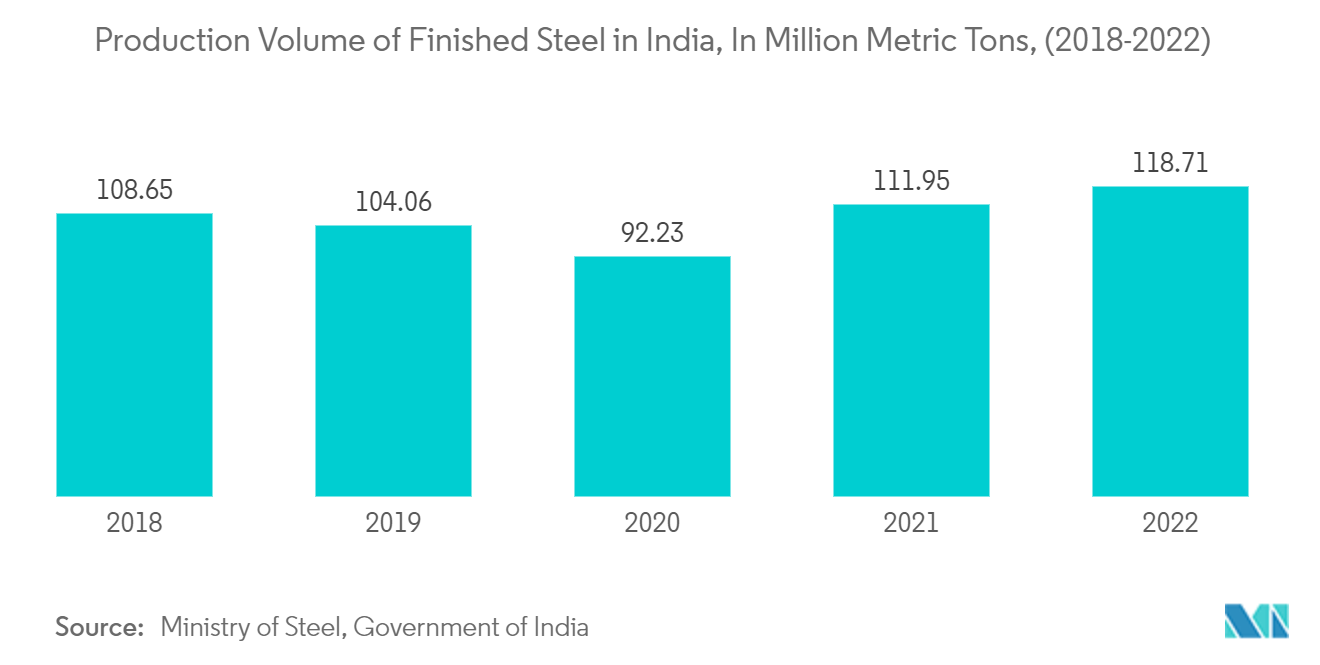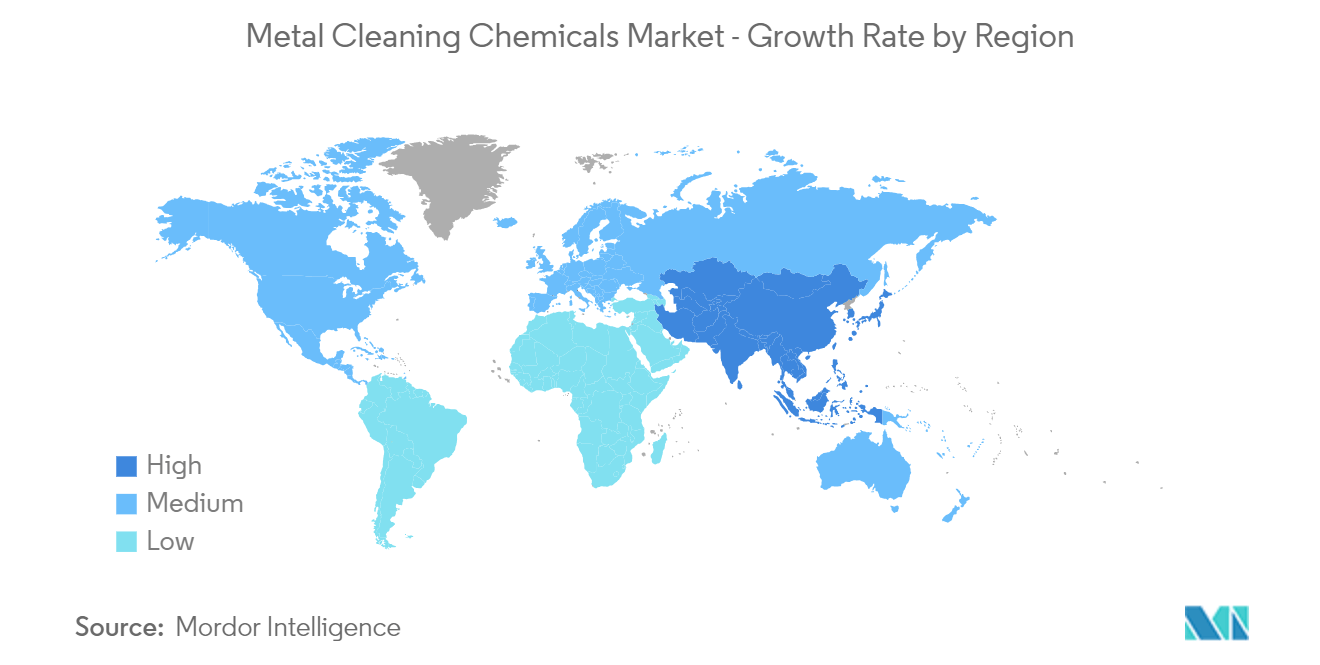Market Trends of Metal Cleaning Chemicals Industry
Increasing Demand in the Steel Sector
- The steel industry is the largest user of metal cleaning chemicals because it needs to keep its metallic surfaces clean. Industrial metal cleaners are a valuable solution for this challenge because they can clean equipment without having to disassemble and reassemble it, and they also prevent corrosion after cleaning.
- This segment is growing due to urbanization, technological advancements, government support, strong demand for steel in industrial applications, increasing manufacturing needs, and a growing focus on industrial cleaning and maintenance.
- The World Steel Association predicts that finished steel usage will increase by 1.0% in 2023, following a 2.3% decline in 2022. China's economy had a significant impact on steel production in 2022, which fell by 4%. Due to prolonged COVID-19 containment measures, which reduced demand for real estate and construction projects, steel production is expected to remain stable in China in 2023.
- India's increased production of finished steel products in 2022, driven by infrastructure spending, strong consumer demand, and automotive industry growth, is expected to boost the metal cleaning chemicals market associated with steel production during the forecast period.
- India produced over 125 million metric tons of steel in the fiscal year 2022-23, according to the National Steel Policy. New Delhi aims to increase this production to 300 million metric tons by 2030.
- Steel is one of the most significant metal types in the metal cleaning chemicals market and is expected to drive this market further during the forecast period.

Asia-Pacific to Dominate the Metal Cleaning Chemicals Market
- The Asia-Pacific market is expected to grow at the fastest rate due to the high production and consumption of metals such as steel and aluminum. These metals are widely used in the manufacturing of various components, vehicle frames, and industrial control panels, among others, and require metal cleaning solutions to be cleaned.
- The rapid economic growth in the region, coupled with rising disposable incomes, is creating opportunities for international companies to enter the local market and increase their visibility and revenue potential.
- India produced 125.32 million metric tons of crude steel and 121.29 million metric tons of finished steel in fiscal year 2022-23, making it the world's second-largest producer of crude steel, according to the World Steel Association.
- The global automotive industry grew by 6% in 2022, according to OICA. In developed and developing countries across the world, including China, Germany, South Korea, Canada, the United Kingdom, and Italy, automotive production increased in 2022. Over 85 million motor vehicles were manufactured in 2022.
- According to IBEF (India Brand Equity Foundation), 30 companies have had 67 applications approved for the Production Linked Incentive (PLI) Scheme for Specialty Steel. These approvals are expected to attract an investment of INR 4,250 trillion (USD 5.19 billion) and increase downstream iron and steel capacity by 26 million tonnes.
- Invest India predicts that India will become a USD 1 trillion digital economy in the Electronics System Design and Manufacturing (ESDM) sector by fiscal year 2026. The Indian electronics market is currently worth USD 155 billion, with domestic production accounting for 65%. Additionally, the Semicon India Program, a USD 10 billion incentive program, was launched to develop a sustainable semiconductor and display ecosystem in the country.
- According to PwC, India's chemical industry is one of the world's fastest-growing sectors, projected to reach a value of USD 304 billion by 2025.
- India is the world's 6th and Asia's 3rd largest producer of chemicals, contributing 7% to India's GDP, according to IBEF. The government allocated INR 173.45 crore (USD 20.93 million) to the Department of Chemicals and Petrochemicals in the Union Budget for 2023-24.
- Asia-Pacific is experiencing rapid growth and investment from governments and businesses in the region. It is poised to become the world's dominant chemical market, with China, India, and Japan leading production and consumption.


